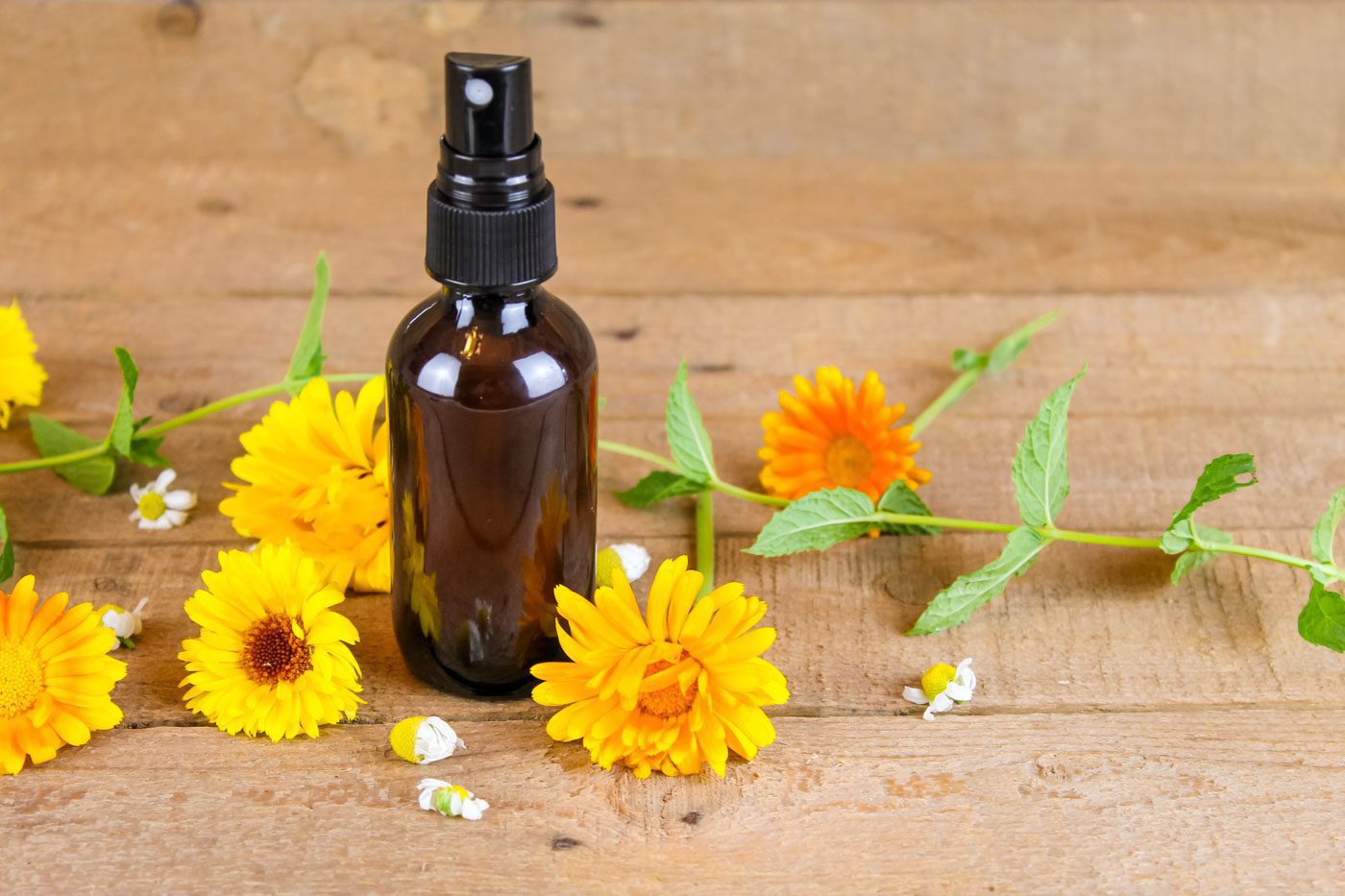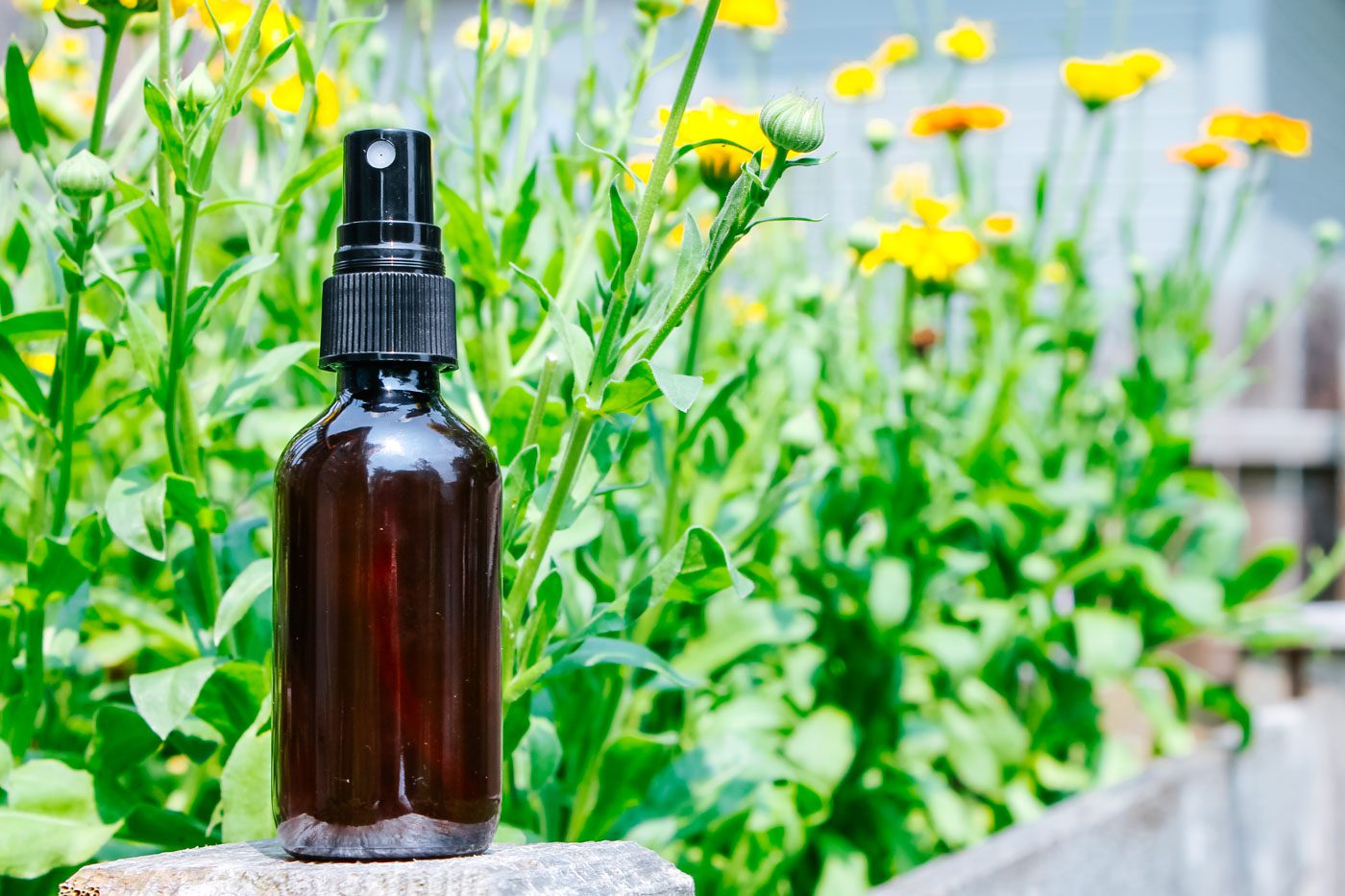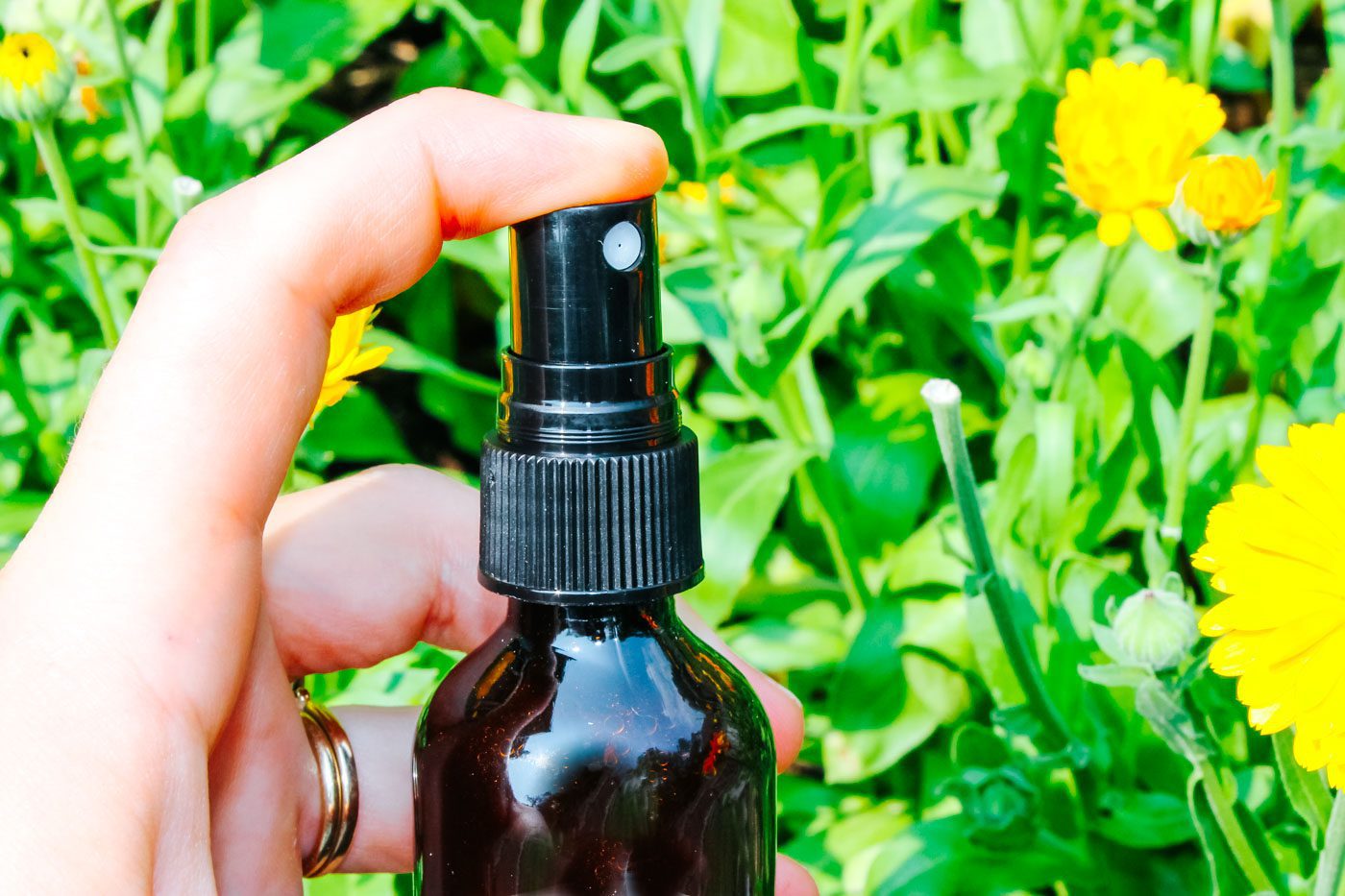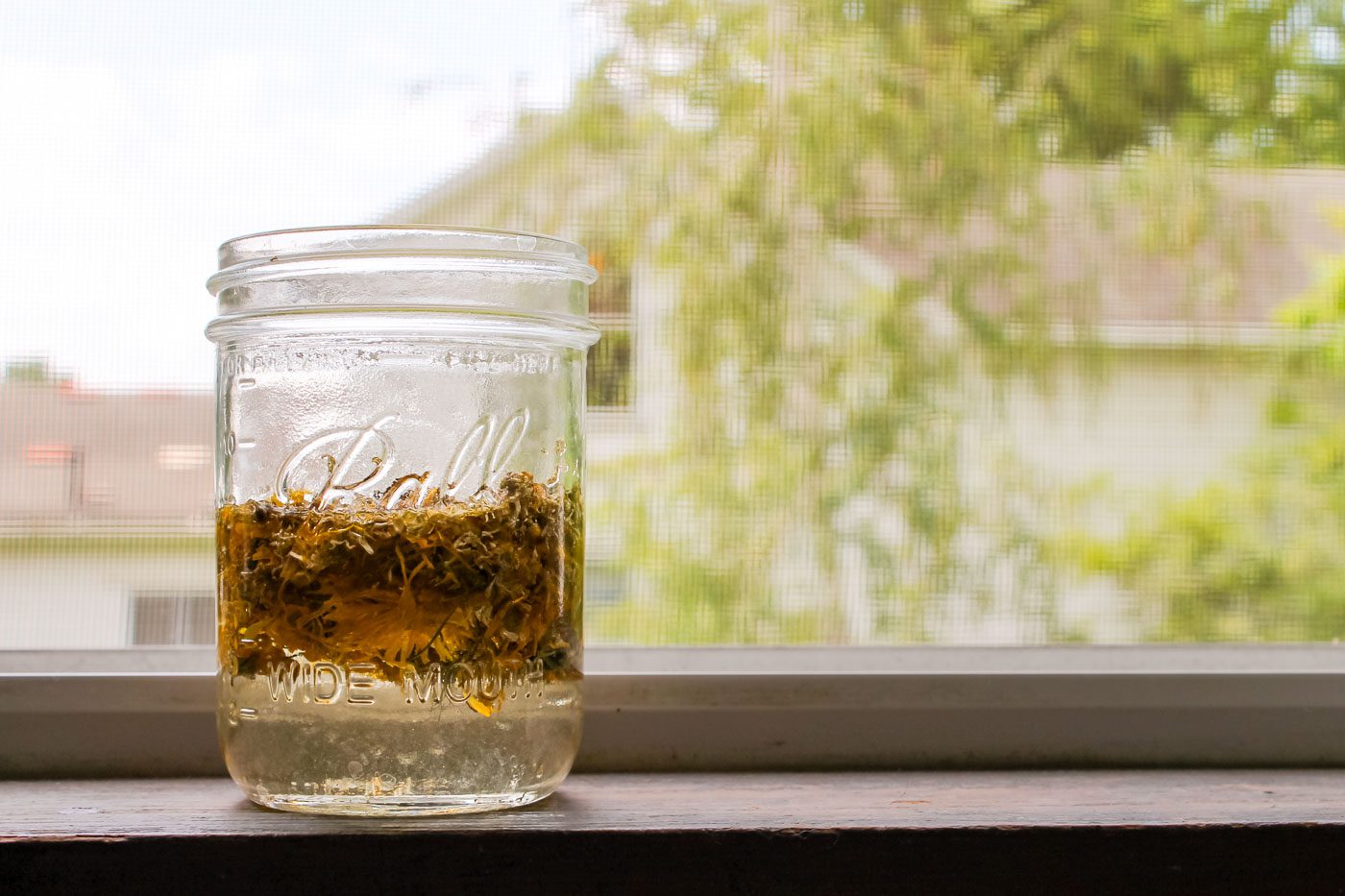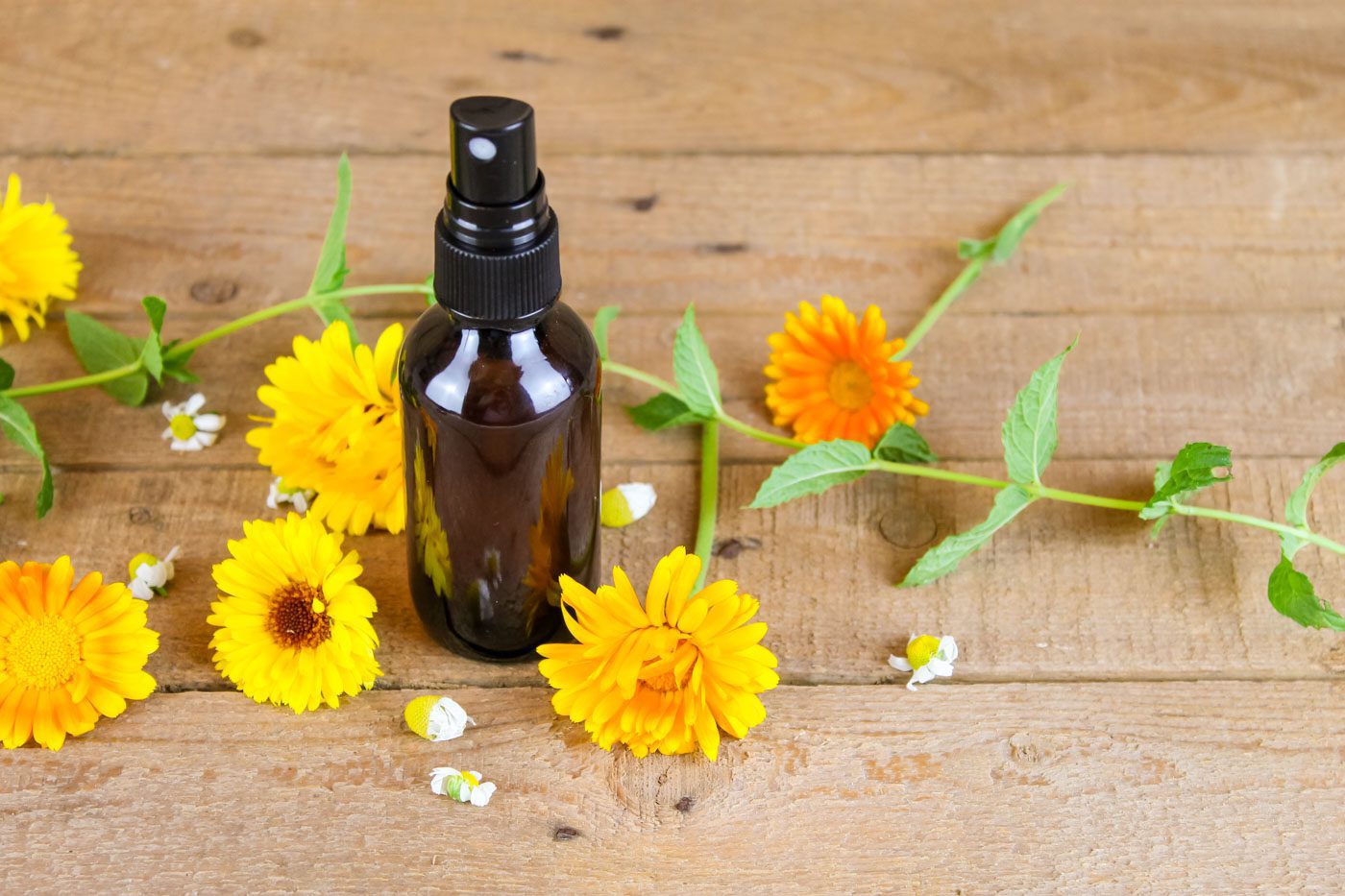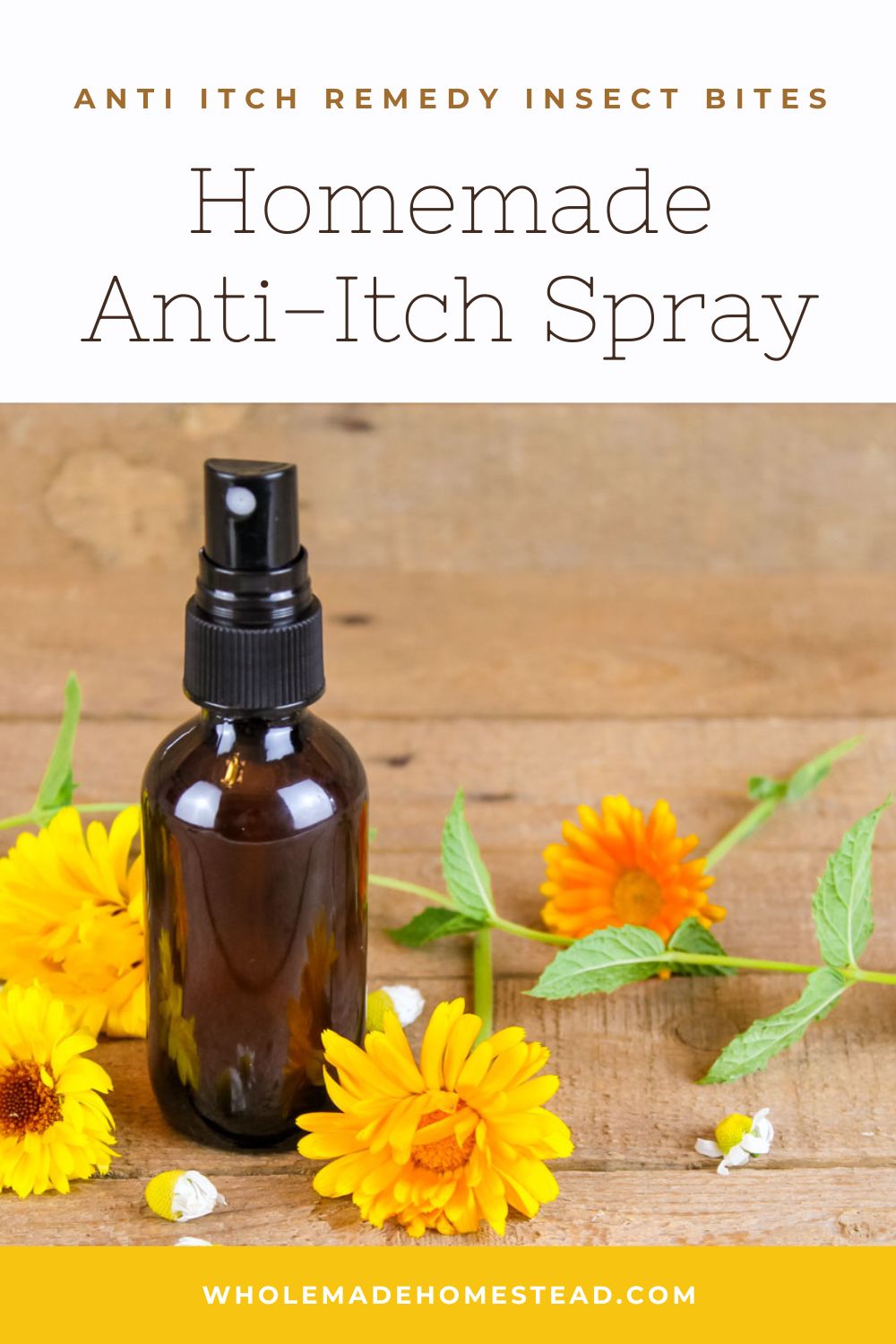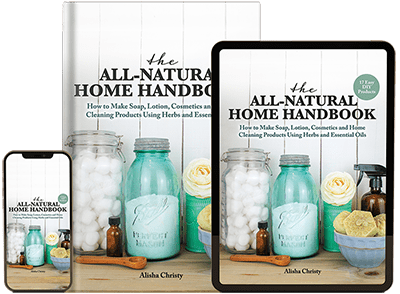Bug bites and rashes from plant life can be common during the summer months when you’re likely spending a lot of time outside. Try this natural bug bite relief recipe for homemade anti-itch spray. It is made with skin soothing ingredients like calendula, chamomile and aloe vera to help relieve irritation and bring healing to the skin.
This post contains affiliate links, which means I make a small commission at no extra cost to you. In any case, I only link to products we actually use on our homestead and that I believe can truly benefit to you. See my full disclosure here.
DIY Anti Itch Spray
As homesteaders we spend much of our spring, summer and some of the fall outdoors. Gardening and raising our own meat requires us to be outside come sunshine, heat or humidity. Since we spend so much time among the greenery and vegetation we are bound to get bit by some bug or rub up against a plant that causes our arms or legs to break out into a rash.
For many years, when I would go to harvest zucchini from the garden or pick poles beans from our vintage ladder trellis, I’d get these odd scratches and marks from the plant life. They would burn for a while and then heal within a few days, if left untreated. When I began delving into herbalism, I came across some herbal salves that would bring healing to things like sore muscles, dry and cracked heels and skin burns. One day after an incident with the beans … again, I decided to break out the salve and see if it reduced the inflammation on my skin. In less than a minute, the burning sensation disappeared and the swollen marks began to heal.
I was amazed!
I knew there was great power behind these herbs. This summer to combat the usual rashes I get from plants, as well as bug bites from biting flies and troublesome mosquitoes, I decided to create a soothing spray that would heal the rash and stop the itch.
The homemade anti-itch spray is made with calendula and chamomile, two wonderfully soothing herbs for the skin, witch hazel, aloe vera gel and tamanu oil. The tamanu oil is optional but I believe it greatly aids in the success of this bug bite spray. If you don’t have any on hand, you can replace it with more aloe vera gel or just skip it altogether.
Plants That Cause Rashes and Itching
Come summer there are a variety of plants that can cause rashes or itchy, irritated skin. Among the most common are poison ivy, poison oak and poison sumac. While I’ve never personally encountered any of these plants, there are several plants in my garden that can cause my skin to become itchy or swell. Here are a few garden plants that can make you irritate your skin.
- Green beans (bush or pole)
- Zucchini
- Cucumber
- Hops
- Tomato
- Comfrey
- Strawberry
- Goldenrod
- Stinging nettle
- Hogweed
Why Do Bug Bites Itch?
Many biting bugs are out to get a snack, such as the familiar mosquito. When it bites you, your body reacts by releasing a histamine to deal with the allergen. Your skin then swells, creating a bump that is often itchy. This is a natural response for your body, but you can counteract the stinging, itchy feeling by using a natural bug bite relief spray as such as in the recipe located at the bottom of this page.
What Home Remedy Stops Bug Bites From Itching?
When you have found that you have been munched on, a little dab of honey, apple cider or natural dish soap can help relieve itching and discomfort. You can also mix a little water with some baking soda and apply it to the irritated spot. A simple combination of ground oatmeal and water will form a paste that can be placed onto the skin to reduce the itching and swelling.
7 Home Remedies for Rashes
1. DIY Bug Bite Spray
Wonderful for bites, rashes or simple skin irritations, natural anti-itch spray is one you’ll want to have on hand all summer long. Made with skin soothing herbs, aloe vera gel and a few other all-natural ingredients. Simply spray and experience relief. Scroll to the bottom of this post for the homemade anti-itch spray recipe.
2. Witch Hazel
Anti-inflammatory and an astringent, witch hazel is definitely something you’ll want to have on hand at all times. It is great for treating rashes, stopping the itch and even healing bruises.
3. Aloe Vera Gel
The aloe vera plant is most well known for treating burns. But did you know it is also an incredible natural remedy for rashes and bug bites. It works by reducing inflammation and redness of the skin which makes it a perfect addition to this natural bug bite spray below. When purchasing aloe vera gel, make sure it is clear, without artificial coloring and has a thick, gel-like consistency.
4. Coconut Oil
Of course coconut oil made the list for a natural rash remedy. What is coconut oil not good for? It is anti-bacterial, anti-viral and anti-fungal. A little dab on the skin can help relieve skin irritation and set forth healing.
5. Bentonite Clay
Bentonite clay is a gray, mineral rich powder that helps to draw out toxins as well as absorb oils or excess moisture. When treating a rash or bug bite, mix with a few drops of water to form a paste and apply to the troubled spot. Let sit for awhile before rinsing it off.
6. Essential Oils
There are many essential oils including tea tree and chamomile that can help fix problematic skin. When using, be sure to add the essential oil to a carrier oil or mix into a salve or balm. Never apply the EO directly to the rash or bug bite.
7. Poultice
A poultice is an excellent way to treat rashes, bug bites or stings. For instance, say you have been stung by a bee, you would chew up a bit of fresh plantain then slap it on the sting to draw out the poison. Fresh or dried herbs can be used when making a poultice. When making a poultice, grind the herbs in a spice grinder, mix with a little water, oil or tincture and place on the skin. To secure the poultice, wrap with a cloth bandage and leave on for about twelve hours.
Best Anti Itch Spray for Humans
Makes: About 1 cup
Ingredients
1/4 cup (3 g) dried calendula
1/4 cup (5 g) dried chamomile
1 cup (250 ml) witch hazel
1 tablespoon aloe vera gel
1 1/2 teaspoons tamanu oil, optional but recommended
Spray bottle
Directions
In a pint size glass jar add the dried calendula and chamomile. Pour the witch hazel over the herbs. If the herbs float to the top, push them to the bottom of the jar and add a bit more witch hazel to ensure they are completely covered. Place a plastic cap on the jar and store in a dark cabinet for 1 week. Occasionally check on the jar to make sure the herbs are still submerged in the liquid. Give it a gentle shake every other day or so to prevent any mold from potentially growing.
When the infused witch hazel is ready to use, strain the herbs into a clean container. If you find any particles fall through the fine mesh strainer, line the strainer with a coffee filter or cheesecloth. Fill a small glass spray bottle with the infused liquid. Add the aloe vera gel and tamanu oil. Give it a good shake to combine the ingredients.
To use spray on your arms, legs or any other areas that have developed a rash or irritation. The spray can be stored in the fridge to add extra refreshment when sprayed onto your skin. Storage in the fridge also helps to extend shelf life. The rash relief spray should last for at least a month.
You May Enjoy These Natural Remedies
Homemade Anti-Itch Spray
Bug bites and rashes from plant life can be common during the summer months when you’re likely spending a lot of time outside. Try this natural bug bite relief recipe for homemade anti-itch spray. It is made with skin soothing ingredients like calendula, chamomile and aloe vera to help relieve irritation and bring healing to the skin.
Materials
- 1/4 cup (3 g) dried calendula
- 1/4 cup (5 g) dried chamomile
- 1 cup (250 ml) witch hazel
- 1 tablespoon aloe vera gel
- 1 1/2 teaspoons tamanu oil, optional but recommended
- Spray bottle
Tools
- In a pint size glass jar add the dried calendula and chamomile. Pour the witch hazel over the herbs. If the herbs float to the top, push them to the bottom of the jar and add a bit more witch hazel to ensure they are completely covered. Place a plastic cap on the jar and store in a dark cabinet for 1 week. Occasionally check on the jar to make sure the herbs are still submerged in the liquid. Give it a gentle shake every other day or so to prevent any mold from potentially growing.
- When the infused witch hazel is ready to use, strain the herbs into a clean container. If you find any particles fall through the fine mesh strainer, line the strainer with a coffee filter or cheesecloth. Fill a small glass spray bottle with the infused liquid. Add the aloe vera gel and tamanu oil. Give it a good shake to combine the ingredients.
- To use spray on your arms, legs or any other areas that have developed a rash or irritation. The spray can be stored in the fridge to add extra refreshment when sprayed onto your skin. Storage in the fridge also helps to extend shelf life. The rash relief spray should last for at least a month.

